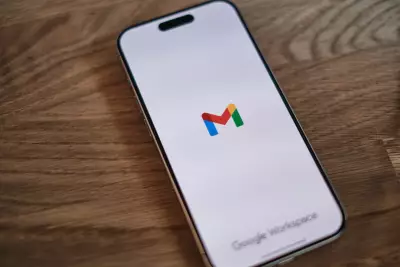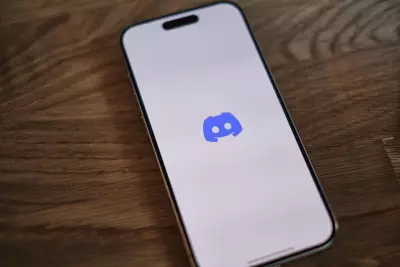What You Need to Know about the Tea App Data Breach
Table of Contents
- Published: Aug 13, 2025
- Last Updated: Aug 13, 2025
Sean Cook created the tea app in November 2022. As a former product manager at Salesforce and Shutterfly, Sean self-funded the project, inspired by his mother’s negative experiences in the dating pool. The Tea app was designed to be a women-only platform vetting potential dates and providing AI-engineered gender verification. It has gained significant traction following viral popularity on TikTok and Reddit, amassing over 6 million users.
However, critics have claimed it uses ‘witch-hunting’ methods and is at risk of doxing. The company also reportedly deals with daily legal threats from men named on the platform.
Unfortunately, the company suffered data breaches in July 2025. The first exposed 72,000 images, and the second, 1.1 million private messages, which contained sensitive personal information, including real names, social media handles, phone numbers, and meeting details. These breaches were then exploited by 4chan users, who weaponized the leaked information for harassment.
When was the Tea App Data Breach?
The data breach occurred in late July 2025 and involved two phases. In the first phase, hackers accessed an unsecured legacy database, exposing 72,000 images. These included 13,000 verification selfies and government IDs that were supposed to be deleted after review. A second breach later exposed 1.1 million private messages on the app from early 2023 to July 2025. These revealed sensitive conversations on infidelity and abortions.
They also illustrate personal contacts, which could be used for harassment and hacking. The Tea app administrators initially claimed that only users before February 2024 were affected by the breach. However, they later admitted the messaging breach consisted of recent activity on the app. The app disabled direct messaging and offered identity protection services.
How to Check if Your Data Was Breached
If you were a user on the app, there are a few ways to ascertain if the information was exposed. The first thing to do is to watch for official communications. The Tea app started notifying the affected parties via email and in-app alerts in early August 2025. Check the email you used to register the account, including the spam folder, for messages from the app’s security department. Users may also visit the dedicated breach notification page or call their customer support contact to determine exposure.
For better monitoring, use tools like Have I Been Pwned to check if the email or phone number exists in known data breaches. Considering the leaks included sensitive images and private messages, be vigilant concerning phishing, which can reference the Tea App activity. If one has submitted verification and documentation, it may be considered for issuing a fraud alert with the main credit bureaus.
The application provided affected users with free identity protection. If potentially affected, you may regularly review financial statements and online accounts to assess suspicious activity.
What to Do If Your Data Was Breached
If your information was exposed during the July breach, please take critical steps to protect your profile. The first thing is to confirm exposure. Check for official notifications from the app administrators via alerts or email. If available, you may visit the breach notification page or contact support to verify which specific data was compromised. Secondly, change the passwords for the Tea app profile and any accounts that use the same credentials. A password manager would come in handy to avoid using similar passwords across financial and social media accounts.
Two-factor authentication is also essential for all critical accounts to prevent unauthorized access. Freeze credit accounts to block fraud by contacting the main bureaus. These are Experian, Equifax, and TransUnion. Stolen IDs and selfies may also be used for financial fraud or creating deep fakes. Monitor credit reports as well for suspicious activity. If selfies or messages get leaked, you may use reverse image search tools to track where they appear online. It is also advisable to report harassment to platforms hosting the data and to document evidence.
Are There Any Lawsuits Because of the Data Breach?
These data breaches have invited significant scrutiny, leading to multiple class action lawsuits being filed in court. The litigation measures allege the site’s negligence, breach of privacy terms, and failure to protect user data. Complainants include women who signed up for the app to anonymously report abusive individuals because they are currently facing emotional distress and harassment.
The main legal argument is the Tea app’s misinterpretation of data deletion practices and lack of security measures, violating the California Consumer Privacy Act. Damages sought may reach upwards of tens of millions of dollars. The Tea App has not yet settled with any plaintiffs, but user trust is already eroding.
Can My Tea App Information Be Used for Identity Theft?
Personal data exposed within the Tea app, including government-issued identity cards, selfies, and messages, all pose a theft risk. Criminals can use this information to create a deepfake or even bypass biometrics and access personal accounts. Alternatively, they may open fraudulent accounts and take loans using these items for verification.
These parties can also engage in harassment and doxing. This was the case when 4chan users mapped the locations from the exposed data and decided to share it for malicious reasons. The misogynistic backlash from the breach increases potential risk with trolls weaponizing information to threaten women who shared private information in chats.
What Can You Do to Protect Yourself Online?
Despite the Tea App’s claims on its efforts to take reasonable countermeasures to ensure data safety, potentially affected individuals should go the extra mile to protect their information. The following are a few things you could do:
- Change the Credentials on the Tea App and other Social Media Accounts: Use a Google password manager or unique characters for the online accounts. This reduces the chances of further hacking and exposure and secures other accounts used on the same devices.
- Enable Two-factor Authentication: This acts as a second layer of protection for accounts, reducing the chances of infiltration.
- Install Antivirus and Update Security Software as Needed: They should be up to date to prevent current cyber threats.
- Monitor Credit and Financial Accounts: Look for unauthorized transactions from vendors or within the financial statements. These are indications of fraud or hacking. You may also utilize the credit monitoring service provided by the Tea App to check your files proactively.
- Be Aware of Phishing Attempts: Cybercriminals may try to exploit weaknesses by impersonating legitimate parties like financial firms or the Tea app. Their goal is to secure credentials or account information so they can rob you. Be wary of requests to access the account or any bank account from unverified sources. It is also advisable to avoid downloading any attachments from unverified sources.
- Avoid Using Public Wi-Fi: Do not use public Wi-Fi to access social media or online financial accounts. It creates vulnerabilities that could lead to malware being installed on your device, hacking, or effective phishing.














